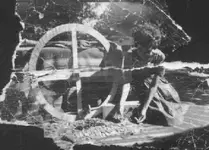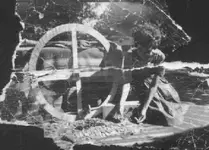Guys, I just discovered this site today and I am quite fascinated by it

. This is my first post here, but I can contribute a little to the discussion.
The luminous gasses some discuss here are new to me, but sure sound very interesting. I can only comment on cave gasses, though, since I consider myself quite experienced in this area. I am a speleology instructor, I own a speleology school and have more than 18 years of field experience primarily in new caves discovery and exploration.
If you are concerned about limestone caves (which are about 98% of all caves) you don't have much to worry about. Typically, two types of gas are found in such caves - CO2 and CO. The first (carbon dioxide) builds up in caves with no free fair flow (rare) where there is a lot of organic rotting material near the entrance (usually dead leaves and plants). It can also build up if there are carcasses in the cave. It is easy to detect - if you find that you are breathing faster than normal, you should check with flame immediately. Try to light a match. If it does not light, get out.
The other type of gas - the CO (carbon oxide) is much more dangerous, you will not feel it in any way before it is too late, but it is very rare and it is highly unlikely that you bump into it. It usually forms in non-ventilated areas between two sumps in underground rivers. A cave sump should not be attempted without proper equipment and experience, and I doubt that many of you are trained cave divers, so this is really not of concern.
As for other dangerous gasses - flammable, etc, they are found in mines, not in natural caves. Don't confuse mines with caves - they have nothing in common. There are very real dangers exploring mines, but I will not get into details on this.
So, if you need any info on natural caves exploration, I am ready to help with information. I am quite far from the US though (eastern Europe), so no field trips.








 If you are one of those snake friendly people wear cowboy chaps and boots. I don't recommend snake chaps that only go as high as the knee. don't be leave that snakes do not strike above the knee.That is falls. be leave me. Some snakes " Rattlers " can strike as high as the hip area of an average man.
If you are one of those snake friendly people wear cowboy chaps and boots. I don't recommend snake chaps that only go as high as the knee. don't be leave that snakes do not strike above the knee.That is falls. be leave me. Some snakes " Rattlers " can strike as high as the hip area of an average man. . This is my first post here, but I can contribute a little to the discussion.
. This is my first post here, but I can contribute a little to the discussion. 
